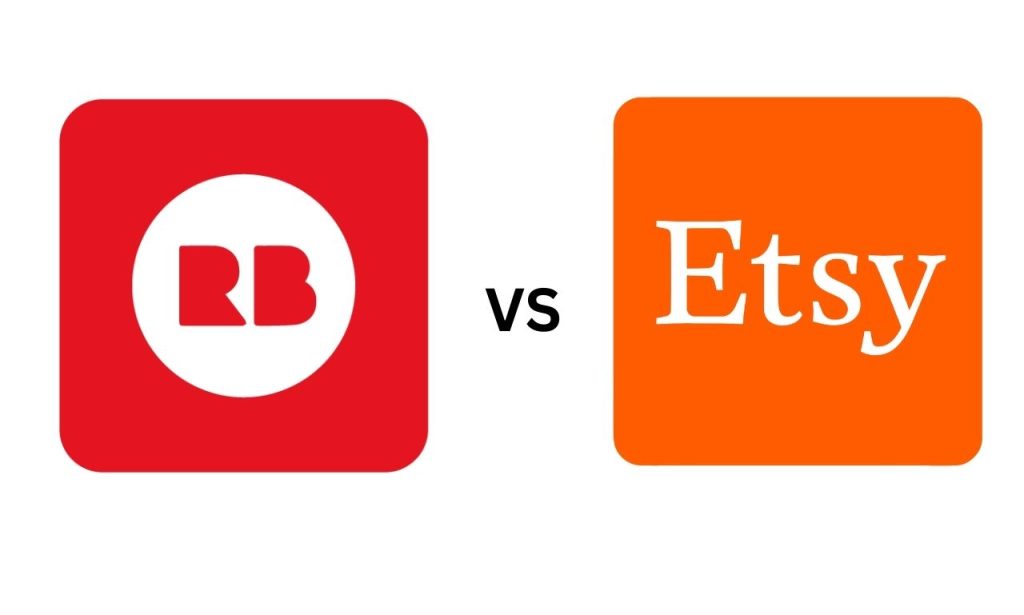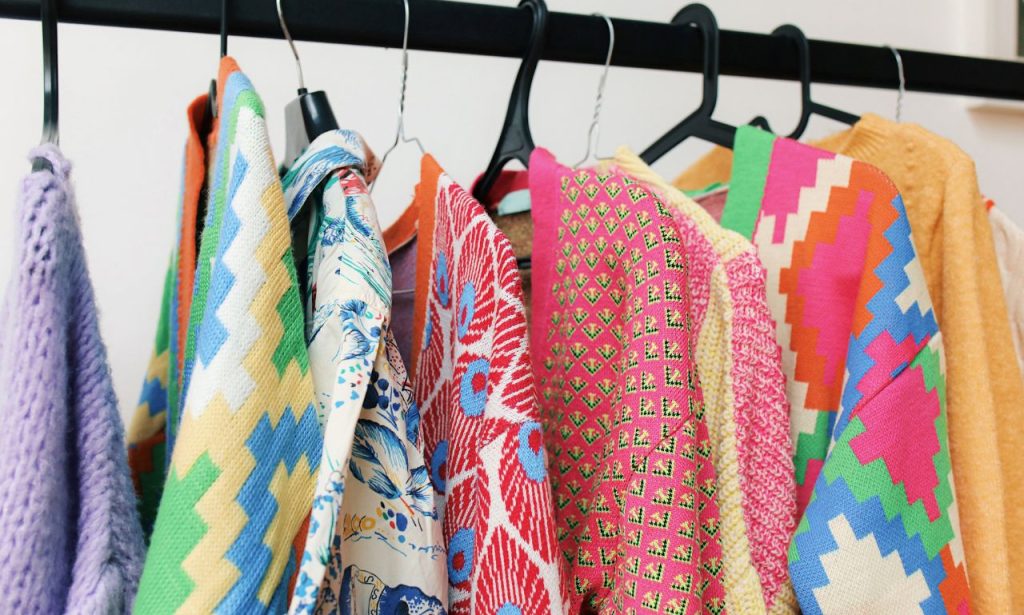Are you an artist looking to monetize your designs in 2024? Redbubble and Etsy are two of the most popular platforms for selling artwork on custom products. But which one is the best fit for your creative business? Let’s dive in and compare Redbubble vs Etsy head-to-head.

What is Redbubble?
Redbubble is a print-on-demand marketplace that allows independent artists to upload their designs and sell them on a variety of products. When a customer buys an item, Redbubble handles the printing, order fulfillment, and shipping. Artists earn a royalty on each sale.
Some key facts about Redbubble:
- Launched in 2006
- Over 700,000 artists
- 70+ products types (t-shirts, stickers, phone cases, wall art, etc)
- Offers free shop setup
- Artists set their own profit margins
What is Etsy?
Etsy is an online marketplace focused on handmade, vintage, and craft supply items. Sellers can set up their own shop and list products they personally make or curate. When an item sells, the seller is responsible for order fulfillment and shipping it to the customer.
Some key facts about Etsy:
- Launched in 2005
- Over 7.5 million active sellers
- 120+ retail categories
- Charges $0.20 listing fees per item
- 6.5% transaction fee on total order amount
How the Platforms Work
Selling on Redbubble
- Create a free Redbubble account and set up your artist shop
- Upload your artwork files
- Select which products you want to offer your designs on
- Add titles, descriptions and tags to help buyers find your products
- Set your desired profit margin
- When a product sells, Redbubble produces it, ships it, and sends you a royalty payment
Selling on Etsy
- Create an Etsy account and set up your shop
- Choose your shop preferences and settings
- Add products by uploading photos, writing descriptions, setting prices, etc.
- Promote your shop to attract customers
- When an item sells, you’re responsible for making/packaging it and shipping to the buyer
- Etsy collects a listing fee, transaction fee, and payment processing fee
Redbubble vs Etsy: Key Differences
Redbubble and Etsy differ greatly in production.
- Redbubble: Print-on-demand. Upload once, get paid repeatedly. No upfront costs, no hassle. Perfect for dropshipping businesses.
- Etsy: Handmade or curated items. Sellers handle production or work with third-party print companies. Higher effort, but greater potential for customization options.
Fee Structures & Payment
- Redbubble: No listing fees. Artists earn a royalty. It’s simple.
- Etsy: Fees, fees, and more fees. Listing fee ($0.20), transaction fee (6.5%), and payment processing fees. Sellers must factor these into product pricing.
With Etsy, higher upfront costs mean more customization and branding potential. Redbubble’s lower fees and passive model appeal to creators looking to avoid the nitty-gritty.
Customization & Branding
- Redbubble: Limited customization. Product selection and visuals are standard—you can set your profit margin, but branding is minimal.
- Etsy: Maximum control over branding. Customizable product listings, branded packaging, and more. If your business goals are centered on creative aspirations and brand identity, Etsy wins here.
Products & production

Redbubble vs Etsy Comparison
| Feature | Redbubble | Etsy |
|---|---|---|
| Fees | No listing fees, ~15-20% base cost + fees deducted | $0.20 listing fee, 6.5% transaction fee, payment processing fees |
| Products | 70+ print-on-demand items | Handmade, vintage, craft supplies |
| Setup | Free shop – just upload designs | Customizable shop – add listings manually |
| Order fulfillment | Redbubble handles production & shipping | Seller handles production & shipping |
| Payment | Royalty payments | Revenue share minus fees |
| Branding | Not customizable | Highly customizable |
| Traffic | Redbubble promotes your designs in the marketplace | Promote your own shop, Etsy has high search traffic |
Which Platform is Better for You?
When to choose Redbubble
Redbubble is ideal if you want a simple, hands-off way to sell your art and designs. It’s great for:
- Artists who don’t want to deal with inventory, shipping and fulfillment
- Designers looking for a quick, easy passive income stream
- Illustrators wanting to sell art with minimal upfront costs
When to choose Etsy
Etsy is better if you want to build a standalone handmade business and connect with customers. It’s well-suited for:
- Makers wanting full control over products and branding
- Artists and crafters with unique physical goods to sell
- Sellers who enjoy handling production and shipping themselves
Tips for Success
No matter which platform you choose, here are some tips to boost sales:
- Stay Trendy: Research what sells. Use popular POD product types to your advantage.
- SEO is Key: Whether it’s Etsy or Redbubble, keywords are your secret weapon.
- Showcase Products Well: Use mockups that pop. Make your product visuals eye-catching.
- Promote on Social Media Platforms: Engage with craft enthusiasts, showcase your creative vision, and interact.
- New Releases: Keep your shop fresh with frequent product releases.
- Excellent Customer Service: Exceed customer expectations. Happy buyers often return.
Redbubble vs Etsy vs Other Platforms
Maybe you’re curious how other platforms compare.
- Depop vs Etsy: Depop is more fashion-oriented. Great for unique, trendy items.
- Printful vs Redbubble: Printful integrates with different ecommerce platforms. More customizable, but higher effort.
- Etsy vs Big Cartel: Big Cartel offers lower fees, but fewer features compared to Etsy’s wide range of integrations.
Research each option to see what aligns best with your creative vision and business scale.
Key Takeaways for Artists in 2024
- Know Your Niche: Each marketplace has a niche audience. Redbubble caters to independent creators looking for POD demand services. Etsy has an established community of craft enthusiasts.
- Match Goals with Platforms: Your platform should match your goals—are you a hands-on business owner, or a designer looking for a passive income stream?
- Evolve Your Strategy: Marketplaces evolve. International sales, effective marketing, and adapting your business model can help you grow.
- Embrace Branding: On Etsy, build your own brand. On Redbubble, let your designs speak for themselves.
Selling Successfully on Both Platforms
While Redbubble and Etsy have distinct business models, it is possible to leverage both to expand your reach and maximize your profit. Many successful artists use this strategy to diversify income streams, reduce risk, and take advantage of each platform’s strengths. Here’s how to sell successfully on both platforms:
1. Diversify Your Product Offerings
- Redbubble: Use Redbubble to sell products that require little to no manual work. Think t-shirts, stickers, phone cases, and art prints. This way, you can generate income with minimal input after the initial setup.
- Etsy: Focus on unique, customizable products that showcase your personal touch. Use Etsy’s customization tools to add variations, gift messages, and more.
2. Adapt Product Listings for Each Platform
Different platforms have different user preferences. Redbubble customers are likely looking for unique designs, while Etsy customers may be looking for products that they feel a personal connection with. Tailor your product descriptions accordingly:
- On Redbubble, focus on the design itself. What does it represent? How does it stand out?
- On Etsy, tell a story. Customers love to know who made the product and what inspired it.
3. Leverage Marketing Strategies for Maximum Exposure
- Social Media: Social media platforms like Instagram, TikTok, and Pinterest are perfect for showcasing your artwork. Create visually appealing posts that link directly to your Etsy or Redbubble shop.
- Community Engagement: Engage with potential customers by joining online groups, communities, and forums. Participate in craft enthusiast groups, attend virtual fairs, and connect with content creators who may want to feature your work.
- Email Marketing: Use email lists to keep customers updated about new products, promotions, or upcoming events. Etsy makes it easy to build an email list; use this opportunity to promote your Redbubble items too.
4. Invest in SEO for Both Platforms
Etsy and Redbubble require SEO for your products to rank highly in their respective search engines. To improve visibility, focus on the following:
- Keywords: Use specific keywords that are relevant to your product. Think like your buyer: What would they search for?
- Tags and Descriptions: Tags are powerful. For Etsy, use all 13 tags for maximum exposure. Redbubble also allows keyword tags—don’t skip this step.
- Titles: Incorporate the most important keywords into your product titles. The closer the keyword is to the start of the title, the more weight it carries.
5. Keep Inventory and Products Fresh
Stale inventory can harm your visibility on Etsy, and stagnant designs on Redbubble won’t attract new eyes. To keep customers engaged and interested:
- Launch New Products: Regularly introduce new designs on Redbubble to increase the chances of hitting a trending style.
- Seasonal Items: Create seasonal or holiday-themed products that are timely and relevant.
- Limited Editions: Consider making limited-edition items for Etsy, encouraging a sense of urgency in potential buyers.
6. Provide Stellar Customer Service
- Etsy: Personalize every order. Add thank-you notes, branded packaging, and make customers feel valued. Quick responses to inquiries and problem-solving also go a long way.
- Redbubble: Engage with customers by encouraging reviews and comments on your designs. Although you have less control over customer interactions, stay active on the platform.
7. Integrate Both Shops on Your Website
If you have your own website, use it as a centralized hub for showcasing both your Etsy and Redbubble products. This allows your potential buyers to see everything you offer, no matter the platform.
- Use widgets or links to direct visitors to each store.
- Emphasize the different strengths of each store, such as customized options on Etsy versus a wider range of products on Redbubble.
8. Test and Learn
Every artist’s journey is different. Track what sells and what doesn’t. Experiment with different types of products, marketing strategies, and pricing structures.
- Monitor Analytics: Both Etsy and Redbubble provide analytics tools to track visits, conversion rates, and bestsellers. Use these insights to refine your product offerings and promotions.
- A/B Testing: Change up your listings—titles, descriptions, photos—to see what resonates most with customers.
Conclusion
Whether you’re an artist looking to create passive income or build a brand experience with full creative control, Redbubble and Etsy both offer unique opportunities.
For some, Redbubble’s print-on-demand model provides the ideal, low-maintenance solution to earn money from designs with minimal effort. For others, Etsy’s personalized approach offers the joy of being hands-on with customers and the creative process.
Using both platforms can be a powerful strategy—one provides passive income while the other fosters a community-driven, branded experience. By diversifying your product offerings and leveraging the unique strengths of both platforms, you can grow a successful, adaptable art business in 2024.
Embrace your creative aspirations, evolve your approach based on customer preferences, and continually optimize your strategy to find success on Redbubble, Etsy, or both. It’s time to take your art to the next level and thrive as a creative entrepreneur.
Frequently Asked Questions
Yes, many artists choose to sell on both Redbubble and Etsy to maximize their income streams and reach different audiences. There are no rules against selling on multiple platforms.
No, you retain full ownership of your artwork and copyright when you upload it to Redbubble. They simply have a license to reproduce it on products when customers place orders.
Earning potential varies, but Redbubble royalties tend to be smaller than Etsy revenue share because of Redbubble’s base costs. However, Redbubble involves less work. With Etsy, profits may be higher but there are more upfront costs, fees, and effort involved.
Etsy is a huge marketplace with a lot of competition. It takes effort to get noticed and drive traffic to your shop. Focus on Etsy SEO, promoting on social media, and building a strong brand to stand out.




